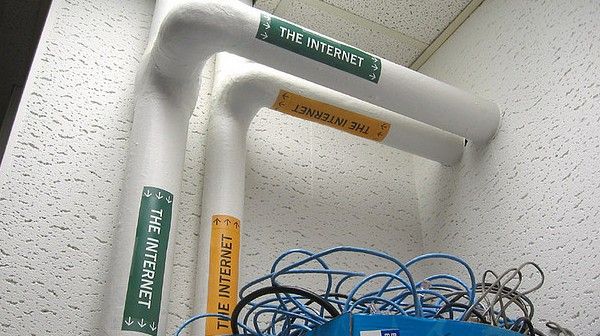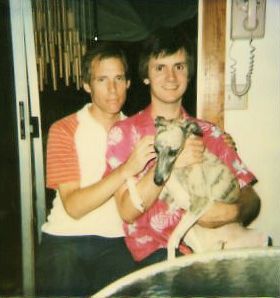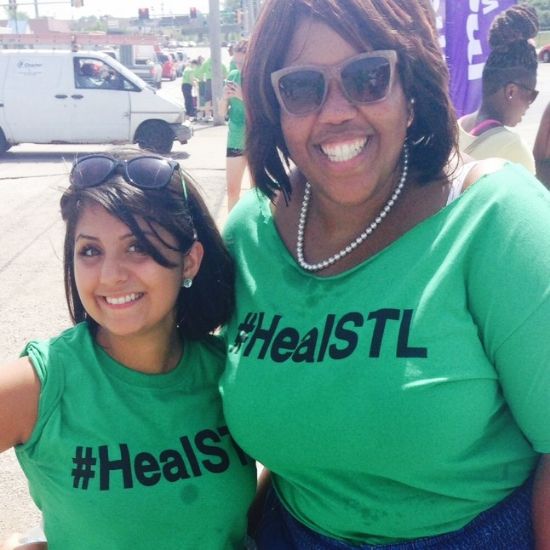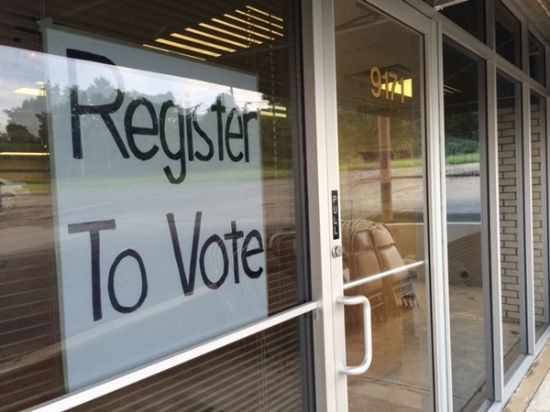September 9th was the 20th anniversary of the signing of the Violence Against Women Act, or VAWA.

Vice President Joe Biden, who as a United States Senator was one of the original sponsors of the law (and who has been a strong proponent of its reauthorization and expansion), spoke about the anniversary.
Today, standing in front of the U.S. Constitution at the National Archives, Vice President Biden reflected on how far we’ve come in our ability — and willingness — to address domestic violence:
Even just 20 years ago, few people wanted to talk about violence against women as a national epidemic, let alone something to do something about. No one even back then denied that kicking your wife in the stomach, or smashing her in the face, or pushing her down the stairs in public was repugnant. But our society basically turned a blind eye. And hardly anyone ever intervened, directly intervened — other than my father and a few other people I knew.
And no one — virtually no one called it a crime. It was a family affair. It was a family affair. Laws — state laws when we attempted at a state or a federal level to design laws to prevent actions that were said that we now are celebrating, we were told, I was told, many of us were told that it would cause the disintegration of the family. That was the phrase used. It would cause the disintegration of the family.
“This was the ugliest form of violence that exists,” he said, and though many wanted to see these crimes remain hidden in the shadows, the Vice President was committed to bringing them out into the light. “We had to let the nation know,” he said, “because I was absolutely convinced — and remain absolutely convinced — in the basic decency of the American people, and that if they knew, they would begin to demand change.”[…]
Though we’ve come a long way as a society, the Vice President made it clear that much work remains:
We have so much more to do, because there’s still sex bias that remains in the American criminal justice system in dealing with rape — stereotypes like she deserved it, she wore a short skirt still taint prosecutions for rape and domestic violence. We’re not going to succeed until America embraces the notion — my father’s notion — that under no circumstance does a man ever have a right to raise a hand to a woman other than in self-defense — under no circumstance; that no means no, whether it’s in a bedroom, or on the street, on in the back of a car — no means no. Rape is rape — no exceptions.Until we reach that point, we are not going to succeed. But I believe that we can get to that point. It’s still imperfect, but the change is real that’s happening.
To pursue that progress, the Vice President announced that he will hold a Summit on Civil Rights and Equal Protection for Women in order to expand civil rights remedies in the law — because, as he said, “You can’t talk about human rights and human dignity without talking about the right of every woman on the planet to be free from violence and free from fear.”
From the White House:
– FACT SHEET: Standing Up for Women’s Civil Rights, 20 Years After VAWA
“The original law had three simple goals: make streets safer for women; make homes safer for women; and protect women’s civil rights.” – Senator Biden, 1990
“In its totality, the Violence Against Women Act was the first federal law that directly held violence against women as a violation of basic civil rights and fundamental human dignity.” -Vice President Biden, 2013
Nearly 20 years ago, the Vice President first brought to national attention the need to end domestic violence and sexual assault by championing the Violence Against Women Act (VAWA). Today, recognizing the 20th Anniversary of VAWA, the Vice President is taking two significant actions as part of the Administration’s ongoing commitment to put an end to this senseless violence.
First, the Vice President is announcing a Summit on Civil Rights and Equal Protection for Women, which will bring together legal scholars, state and local prosecutors, and the Department of Justice to find a way to let survivors sue their abusers in federal court-which VAWA allowed but the Supreme Court rejected.
Second, the Vice President’s office is releasing a comprehensive report detailing how far we’ve come since VAWA first passed while noting there are many challenges ahead.
Twenty years after VAWA first became law, it has helped change a prevailing culture from a refusal to intervene to a responsibility to act – where violence against women is no longer accepted as a societal secret and where we all understand that one case is too many. There are still many challenges to overcome, and this week’s anniversary is a reminder of the important work ahead.
TWENTIETH ANNIVERSARY OF THE VIOLENCE AGAINST WOMEN ACT
– – – – – – –
BY THE PRESIDENT OF THE UNITED STATES OF AMERICA
A PROCLAMATION
Twenty years ago, our Nation came together to declare our commitment to end violence against women. The Violence Against Women Act (VAWA), written by then United States Senator Joe Biden and signed into law on September 13, 1994, changed the way our country responds to domestic abuse and sexual assault. At a time when many considered domestic abuse to be a private family matter and victims were left to suffer in silence, this law enshrined a simple promise: every American should be able to pursue her or his own measure of happiness free from the fear of harm. On the anniversary of this landmark legislation, we rededicate ourselves to strengthening the protections it first codified, and we reaffirm the basic human right to be free from violence and abuse.
The Violence Against Women Act created a vital network of services for victims. It expanded the number of shelters and rape crisis centers across America and established a national hotline. The law improved our criminal justice system and provided specialized training to law enforcement, helping them better understand the unique challenges victims face. It spurred new State laws and protections and changed the way people think about domestic abuse; today, more women are empowered to speak out, and more girls grow up aware of their right to be free from abuse.
Last year, I was proud to renew our pledge to our mothers and daughters by reauthorizing VAWA and extending its protections — because no matter where you live or who you love, everybody deserves security, justice, and dignity. These new protections make Native American communities safer and more secure and help ensure victims do not face discrimination based on sexual orientation or gender identity when they seek assistance. They provide our law enforcement officials with better tools to investigate rape and increase access to housing so no woman has to choose between a violent home and no home at all. And my Administration continues to build on the foundation of this legislation, launching new initiatives to reduce teen dating violence and to combat sexual assault on college campuses.
VAWA has provided hope, safety, and a new chance at life for women and children across our Nation. With advocates, law enforcement officers, and courageous women who have shared their stories joined in common purpose, our country has changed its culture; we have made clear to victims that they are not alone and reduced the incidence of domestic violence. But we still have more work to do. Too many women continue to live in fear in their own homes, too many victims still know the pain of abuse, and too many families have had to mourn the loss of their loved ones. It has to end — because even one is too many. For as long as it takes, my Administration will keep pushing to make progress on our military bases, in our homes, at schools, and across our country.
Two decades later, a tireless effort has yielded a better, stronger Nation. And on the anniversary of the Violence Against Women Act, we continue to work toward a more perfect society, where the dreams of our mothers and daughters are not limited by fear and where every person can feel safe.
NOW, THEREFORE, I, BARACK OBAMA, President of the United States of America, by virtue of the authority vested in me by the Constitution and laws of the United States, do hereby proclaim the Twentieth Anniversary of the Violence Against Women Act. I call upon men and women of all ages, communities, organizations, and all levels of government, to work in collaboration to end violence against women.
IN WITNESS WHEREOF, I have hereunto set my hand this ninth day of September, in the year of our Lord two thousand fourteen, and of the Independence of the United States of America the two hundred and thirty-ninth.
BARACK OBAMA















